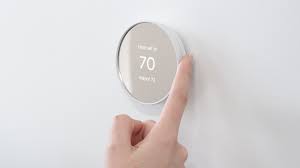
With Texas homes running air conditioning 6-8 months per year and heating systems during unpredictable winter cold snaps, your thermostat controls a significant portion of your energy bill. Smart thermostats promise better comfort, convenience, and cost savings—but are they worth the investment for Texas homeowners?
The short answer: absolutely. But the long answer involves understanding which features matter most for Texas conditions, which models offer the best value, and how to maximize your energy savings.
EPA studies show ENERGY STAR smart thermostats can reduce heating and cooling costs by up to 23%
For a Texas home with $200/month summer cooling bills, that's potential savings of $46 per month during peak season.
Why Smart Thermostats Work Better in Texas
Texas's extreme and variable climate makes smart thermostats particularly valuable:
- Extended Cooling Season: 6-8 month cooling seasons mean more opportunities for automated energy savings
- Variable Weather: Texas can go from 80°F to 30°F overnight—smart learning adapts quickly
- High Energy Costs: Peak demand pricing makes efficient scheduling crucial
- Dual-System Homes: Many Texas homes have heat pumps with backup heat—smart controls optimize which system runs
- Utility Programs: Many Texas utilities offer demand response programs that work with smart thermostats
Key Features for Texas Homes
Learning Algorithms
Adapts to your schedule and preferences automatically
Remote Control
Adjust temperature from anywhere via smartphone app
Energy Reports
Track usage patterns and identify savings opportunities
Geofencing
Automatically adjusts when you leave or return home
Weather Integration
Adjusts settings based on local weather forecasts
Utility Integration
Participates in demand response programs for rebates
Top Smart Thermostats for Texas Homes
Best For: Tech-savvy homeowners who want hands-off automation
- Self-learning algorithm adapts to your schedule
- Excellent energy reporting and insights
- Works with most HVAC systems including heat pumps
- Integrates with Google ecosystem
- Attractive design with large color display
Best For: Homes with hot/cold spots and voice control preferences
- Room sensors for multi-zone temperature control
- Built-in Alexa voice assistant
- Excellent compatibility with Texas utility programs
- Advanced scheduling and occupancy detection
- Superior customer support
Best For: Budget-conscious buyers who want room sensors
- Room sensors included for temperature averaging
- Geofencing technology
- Works with most smart home systems
- Easy DIY installation
- Good value for multi-room control
Best For: Contractors and homeowners who want reliable, simple operation
- Easiest installation and setup
- Works with older HVAC systems
- Flexible wire requirements
- Energy usage tracking
- Trusted brand with excellent reliability
Calculating Your Potential Savings
Smart thermostat savings depend on your current habits and system efficiency:
Typical Texas Home (2,000 sq ft):
- Summer cooling costs: $180-250/month
- Winter heating costs: $80-120/month
- Smart thermostat savings: 15-23%
- Annual savings: $400-600
Payback Period: Most smart thermostats pay for themselves within 1-2 years through energy savings alone.
Texas Utility Rebates: Many Texas utilities offer $50-100 rebates for ENERGY STAR smart thermostats, reducing your upfront cost and shortening payback time.
Installation Considerations
DIY vs Professional Installation:
DIY Installation
- Save $100-200 installation cost
- Most models include step-by-step guides
- Usually takes 30-60 minutes
- Good option for newer HVAC systems
Professional Installation
- Ensures compatibility with your system
- Handles complex wiring situations
- Includes system optimization
- Required for some heat pump systems
Compatibility Check: Before purchasing, verify your system's compatibility:
- Take a photo of current thermostat wiring
- Check if you have a "C" (common) wire for power
- Identify your system type (gas, electric, heat pump, dual fuel)
- Note any special features (emergency heat, auxiliary heat)
Need Help Choosing or Installing a Smart Thermostat?
Our certified technicians can recommend the perfect smart thermostat for your Texas home and ensure it's installed for optimal performance.
Get Smart Thermostat Consultation: (817) 704-0706Maximizing Your Smart Thermostat Savings
Optimal Temperature Settings for Texas:
- Summer: 78°F when home, 82-85°F when away
- Winter: 68°F when home, 65°F when away
- Sleep: 2-4 degrees from daytime setting
Advanced Features to Use:
- Enable geofencing to automatically adjust when you leave
- Set up utility demand response programs for rebates
- Use room sensors to avoid heating/cooling unused areas
- Review monthly energy reports to identify optimization opportunities
- Adjust schedules seasonally for Texas weather patterns
Common Mistakes to Avoid
- Over-adjusting: Let the learning algorithm work—constant manual changes reduce efficiency
- Extreme setbacks: Setting temperatures too high/low when away can waste energy on recovery
- Ignoring maintenance: Smart thermostats work best with properly maintained HVAC systems
- Wrong placement: Avoid locations near heat sources, drafts, or direct sunlight
- Not using all features: Take advantage of scheduling, geofencing, and energy reports
The Bottom Line
For Texas homeowners, smart thermostats are typically an excellent investment. The combination of long cooling seasons, variable weather, and rising energy costs creates ideal conditions for smart thermostat benefits.
Most Texas homes will see:
- 15-23% reduction in heating and cooling costs
- Improved comfort through better temperature control
- Convenience of remote access and automation
- Valuable energy usage insights
- Payback within 1-2 years
Whether you choose the learning capabilities of a Nest, the room sensors of an Ecobee, or the simplicity of a Sensi, upgrading to a smart thermostat is one of the easiest and most effective ways to reduce your energy bills while improving home comfort.
The question isn't whether you should upgrade—it's which smart thermostat is right for your specific Texas home and lifestyle.